Introduction: Why Extend Your Tomato Harvest?
Nothing beats the taste of a sun-warmed tomato straight off the vine. For many home gardeners, the joy of harvesting tomatoes often fades by late summer as temperatures dip and the growing season winds down. But what if you could keep those plants producing into October—or even November?
Extending your tomato harvest into fall is not only possible, but surprisingly simple with the right approach. By choosing the best tomato varieties, adjusting your care routine, and protecting plants from cold snaps, you can keep enjoying flavorful, homegrown tomatoes long after neighbors have pulled theirs out.
In this article, we’ll cover five clever, research-backed strategies that seasoned gardeners use to keep tomato plants thriving into cooler months.
1. Plan Your Planting with Smart Varieties
The foundation for an extended harvest is variety selection. Not all tomatoes are equal when it comes to handling cooler temperatures or ripening quickly enough before frost.
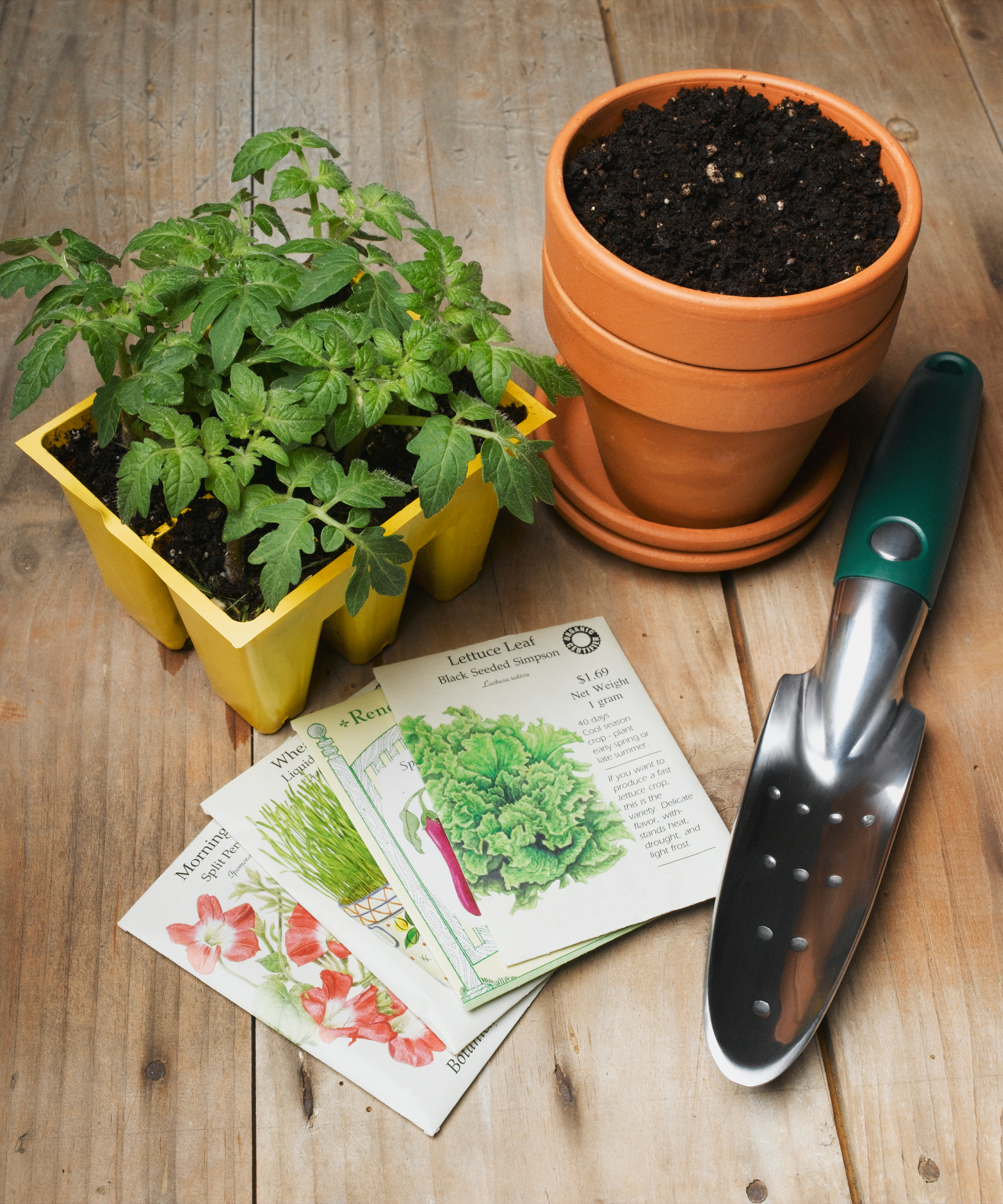
Choose Early and Cold-Tolerant Varieties
- ‘Stupice’: A Czech heirloom variety, famous for its ability to set fruit in cooler conditions.
- ‘Glacier’: Produces small, tasty fruits in just 55–65 days.
- ‘Siberian’: Thrives in shorter, cooler seasons.
- Cherry tomatoes: Varieties like ‘Sweet Million’ or ‘Sungold’ often outperform larger slicing tomatoes late in the season.
These cultivars don’t just survive cooler nights—they thrive in them.
Succession Planting
Instead of planting all your tomatoes in spring, sow a second round in late June or July. This technique, known as succession planting, ensures younger, vigorous plants are still producing when older vines start to slow down.
Tip: Check your area’s first expected frost date. Count backward 70–80 days and start your last batch of seeds accordingly.
2. Adjust Your Care Routine for Fall
Tomato plants that flourish in June won’t respond the same way in September. As days shorten and temperatures cool, you’ll need to tweak your care practices.
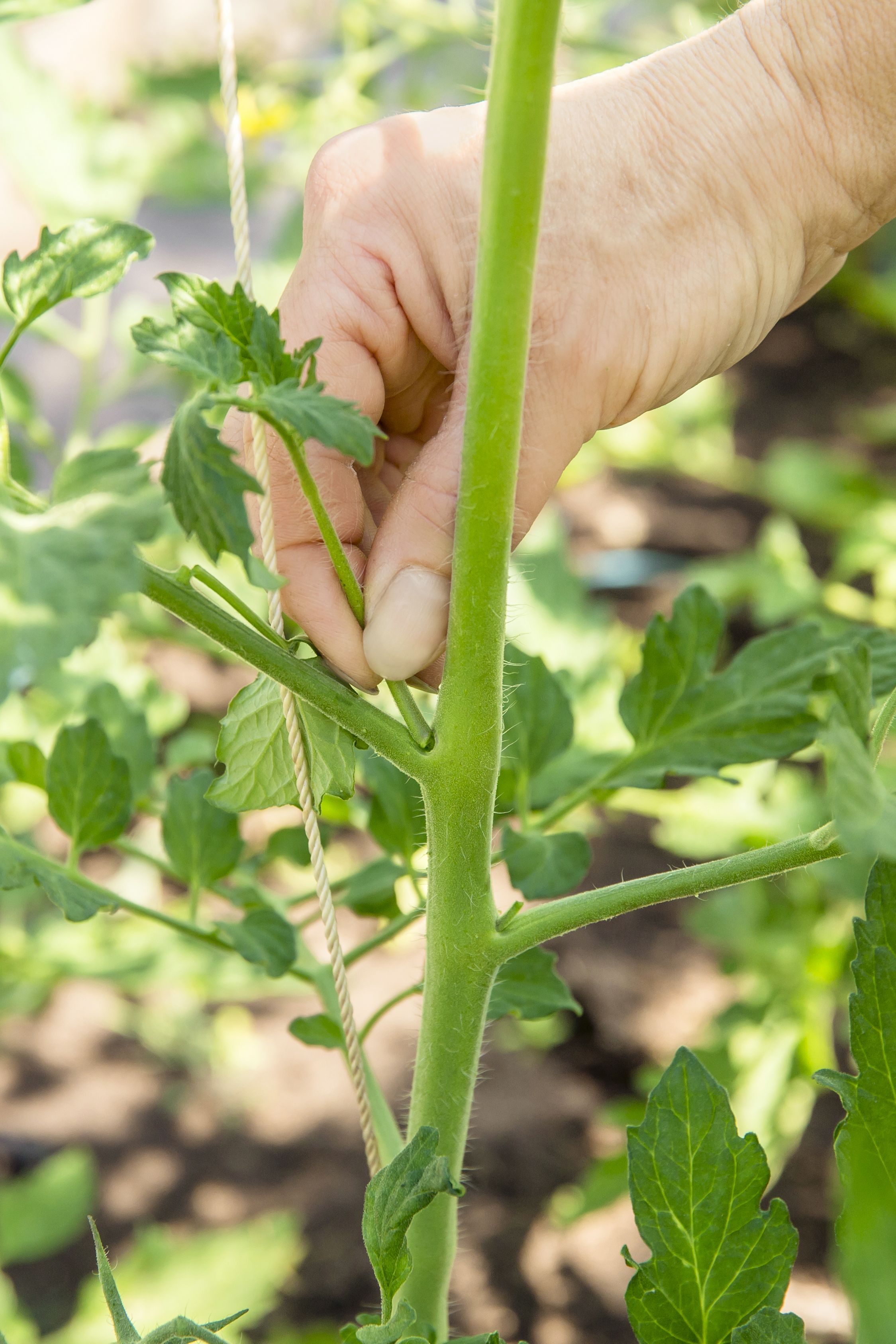
Pruning for Ripening
By late August, prune away:
- New flowers and small fruit that won’t mature before frost.
- Excess foliage to improve airflow and sun penetration.
This redirects the plant’s energy into ripening existing fruit instead of trying to set new ones.
Watering Adjustments
- Aim for 1 inch (2.5 cm) per week as nights cool.
- Avoid overwatering, which can cause fruit cracking.
- Water in the morning to reduce overnight humidity and disease risk.
Fertilizing for Fruit, Not Foliage
Switch to a low-nitrogen fertilizer (5-10-10) in early fall. This blend supports strong root and fruit development while avoiding excessive leaf growth.
Pest and Disease Management
Even in cooler months, pests like aphids or spider mites may linger. Use organic solutions like neem oil or insecticidal soap, and always disinfect pruning shears between plants to prevent disease spread.
3. Pile on the Mulch to Keep Soil Warm
Mulching is one of the simplest yet most effective ways to extend the tomato harvest.
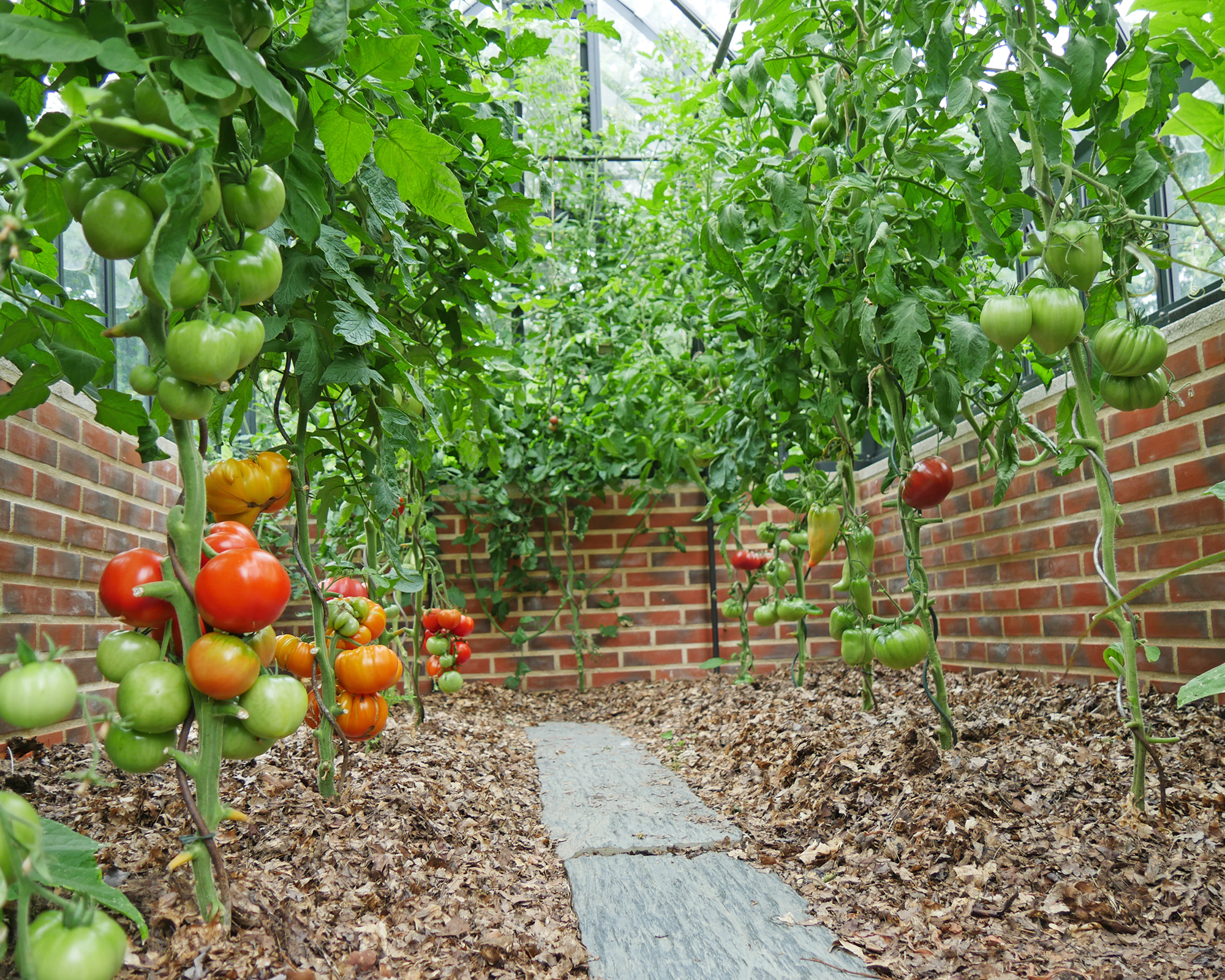
Why Mulch Helps in Fall
- Insulates soil against fluctuating day-night temperatures.
- Retains moisture during drier autumn weeks.
- Suppresses weeds, reducing competition for nutrients.
Best Mulches for Tomatoes
- Straw or shredded leaves (3 inches thick).
- Bark mulch for long-lasting coverage.
- Compost mulch, which also improves soil fertility.
When mulching, leave a small gap around the plant’s base to prevent rot.
Pro Tip: Warm soil encourages continued root activity, keeping the plant energized to ripen fruit longer.
4. Shield Plants from Frost with Covers
Frost is the single biggest threat to extending tomato production. Fortunately, there are affordable and effective protection methods.
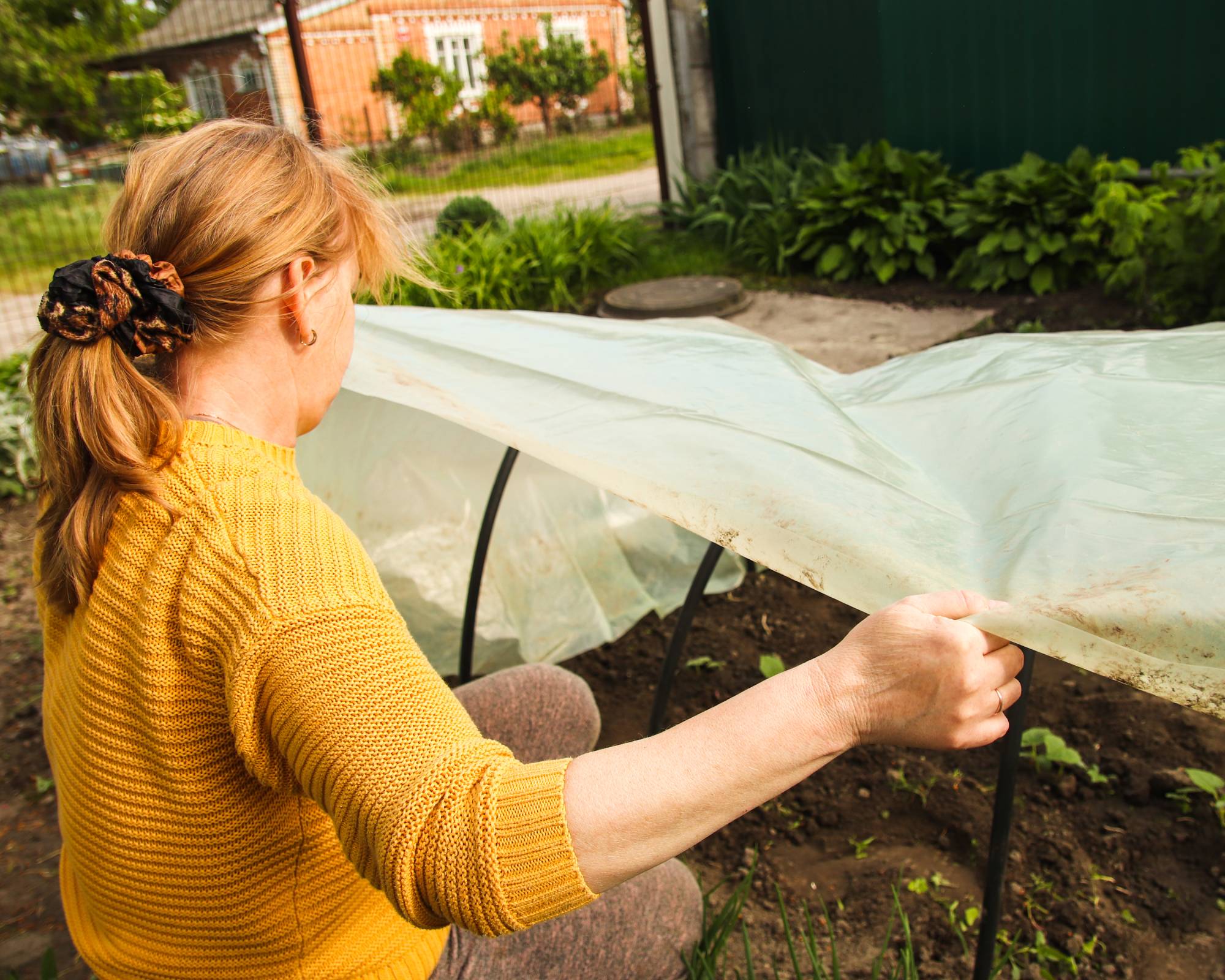
Floating Row Covers
Lightweight fabrics like Agribon AG-19 allow sunlight, air, and water through while protecting plants from temperatures down to 35°F (2°C).
- Use hoops or stakes to hold the fabric above plants.
- Secure edges with bricks or clips.
- Remove covers on warm days to avoid overheating.
DIY Plant Cloches
Repurpose items like:
- Plastic jugs with the bottoms cut off.
- Glass jars for individual clusters of fruit.
Cold Frames and Mini Greenhouses
For serious gardeners, small pop-up greenhouses or cold frames can extend harvests by several weeks.
Tip: Always monitor humidity under covers—trapped moisture can lead to fungal diseases.
5. Bring Potted Tomatoes Indoors
Container gardeners have a distinct advantage: mobility.
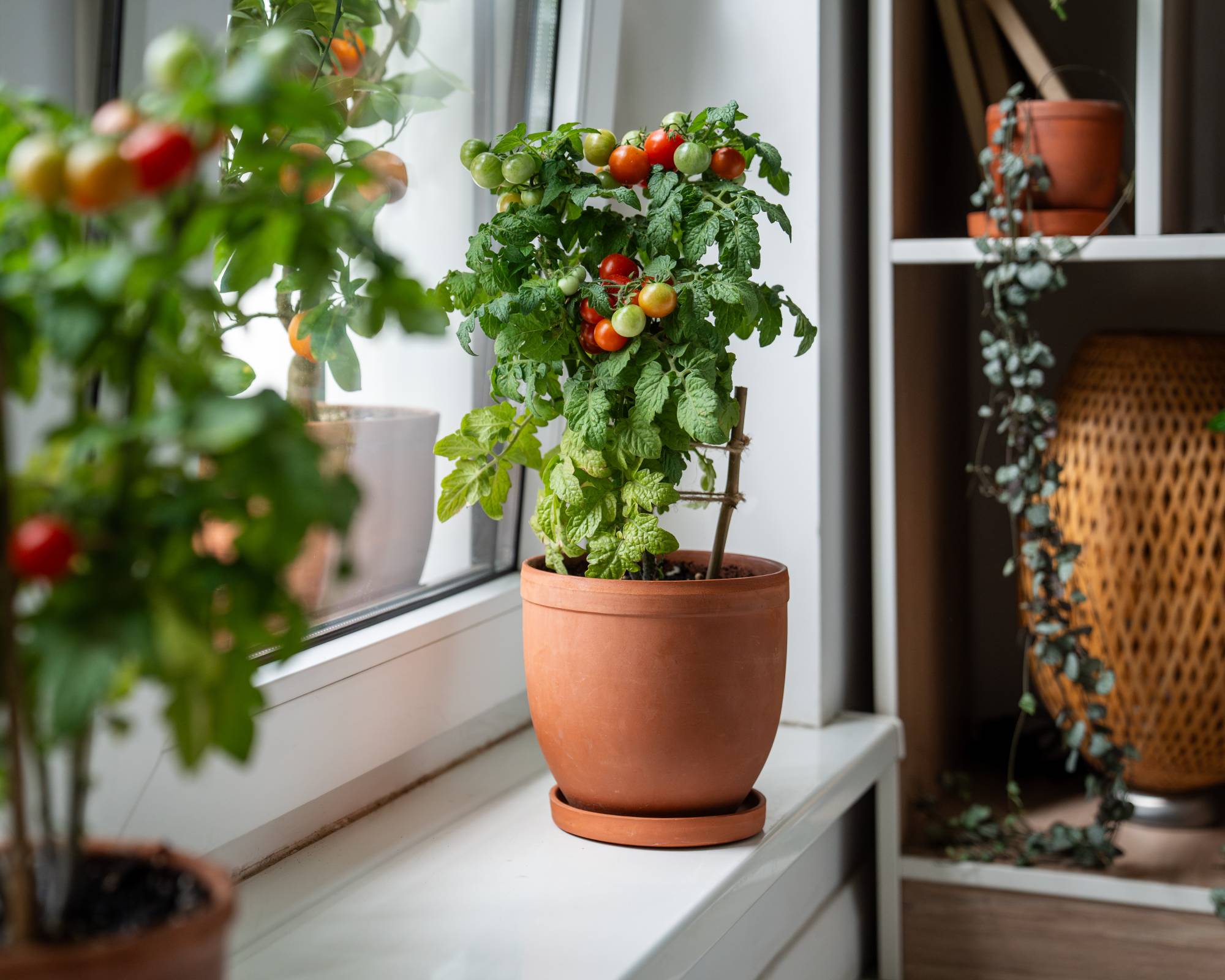
When to Move Plants Inside
Bring pots indoors once nighttime temperatures consistently drop below 45°F (7°C).
Indoor Growing Conditions
- Place plants near a south-facing window for maximum sunlight.
- Supplement with LED grow lights for 6–8 hours daily.
- Maintain indoor temps between 60–70°F (16–21°C).
- Water sparingly—let the top inch of soil dry between watering.
Best Varieties for Indoor Growing
Compact and determinate varieties, such as cherry tomatoes, are ideal for container gardening indoors.
Bonus: Indoor tomatoes also make a decorative and fragrant addition to your kitchen or sunroom.
Extra Tips for a Longer Tomato Season
- Harvest Promptly: Pick ripe tomatoes quickly to encourage more production.
- Ripen Indoors: Green tomatoes can be harvested before frost and ripened inside in a paper bag with bananas.
- Monitor Weather Apps: Stay ahead of sudden cold snaps by checking forecasts daily.
Common Mistakes to Avoid
- Leaving too many green fruits in September – they won’t ripen in time.
- Overfeeding with nitrogen – results in lush foliage, not fruit.
- Skipping mulch – leaves roots vulnerable to temperature swings.
- Forgetting airflow under covers – encourages disease outbreaks.
Conclusion: Enjoy Homegrown Tomatoes Beyond Summer
Extending your tomato harvest into fall is less about luck and more about strategy. By carefully selecting varieties, adjusting your care routine, insulating soil with mulch, shielding plants from frost, and moving potted plants indoors, you can enjoy juicy, flavorful tomatoes weeks—or even months—beyond the traditional season.
Imagine sitting down in October with a salad made from your own homegrown tomatoes while others settle for bland, store-bought ones. With these clever methods, that can be your reality every year.

